Carscoops | Newsletter |  |
- Chevrolet Equinox EV Surfaces Online With Two-Tone Blue And White Paint
- Lucky Biker Discovers Helmets Save Lives After His Head Ends Up Under Bus Wheels
- Rivian Planning More Commercial Vehicles, Wants To Make 1M Per Year By 2030
- Just Two Car Groups Are Attending Korea’s 2022 Busan International Motor Show
- 2022 Toyota Tundra Backup Cam May Show Front Feed When Drivers Are In Reverse
- ACT Becomes First Australian State To Ban Sales Of New Gasoline And Diesel Vehicles From 2035
- Back To 1985? This 569-Mile DeLorean Will Take You Back To ’81
- Elon Musk Hopeful That Tesla Cybertruck Deliveries Will Begin In Mid-2023
- Florida Commissioner Speeding In Ferrari Gets Ticket After Claiming “I Run The County”
- Baidu Debuts Apollo RT6 Level 4 Autonomous Minivan With Removable Steering Wheel
- Rivian’s Amazon Delivery Van Begins U.S. Rollout, Set To Arrive In 100+ Cities By End Of Year
- Ford Mustang Mach-E And F-150 Lightning To Get New Lithium-Iron Phosphate Battery Packs
| Chevrolet Equinox EV Surfaces Online With Two-Tone Blue And White Paint Posted: 22 Jul 2022 01:27 AM PDT 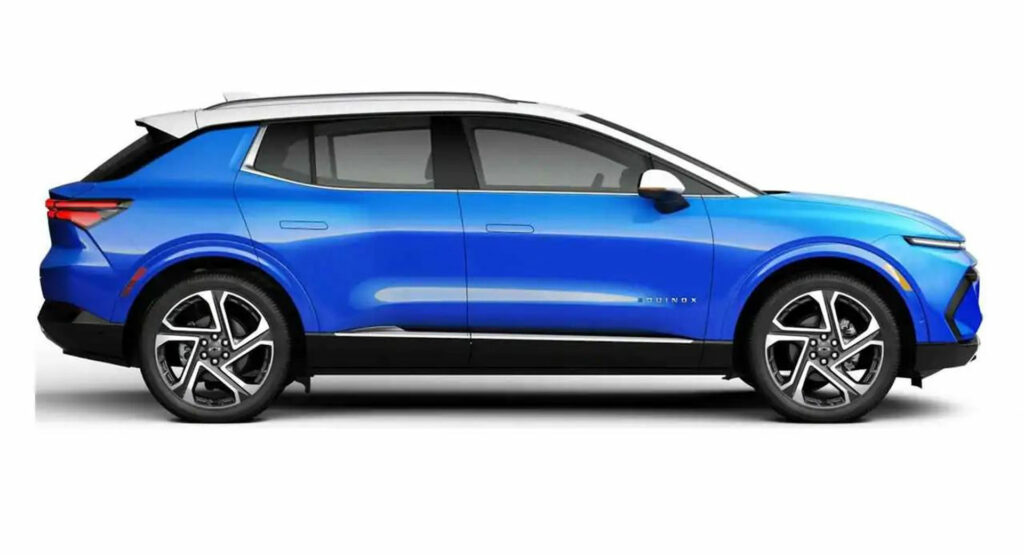 A new image of the production-ready Chevrolet Equinox EV has surfaced online thanks to the carmaker's official website.
Chevrolet has previewed and teased the Equinox EV on a number of occasions in recent months but this is our first time seeing it in its completed form and bathed in a striking two-tone combination of blue and white. This particular image was shared under the 'Upcoming Vehicles' section of Chevrolet's website. As noted by Car and Driver, the Equinox EV pictured has the same exterior finish as the one featured in a CGI clip that Chevy shared back in March. Watch Also: 2024 Chevrolet Equinox EV Shows Off Its High-Tech Interior In New Teaser Video It's hard to deny that the forthcoming Equinox EV is quite a striking SUV. Found up front is a pronounced LED light bar that stretches the width of the fascia and while not visible in this side profile shot, the main headlamps will be located directly below and hidden by tinted trim. The side profile is fairly typical for a sporty crossover of this kind and has black rocker panels which, working in combination with the black lower front bumper and black rear bumper, help to slimline the Equinox EV's figure. The sharp and thick C-pillars are also quite the head-turner. As for the rear of the SUV, it will rock a pronounced LED light bar, sharp LED taillights, a roof-top spoiler, and sport a number of aggressive character lines. Chevrolet has also previewed the interior of the Equinox EV in the past. It will include a flat-bottom steering wheel, a fully-digital instrument cluster, a large infotainment screen, circular air vents, and a subtle gear selector. Technical specifications about the Equinox EV remain unclear, although we know it shares its platform with the Blazer EV and will be slightly cheaper. |
| Lucky Biker Discovers Helmets Save Lives After His Head Ends Up Under Bus Wheels Posted: 21 Jul 2022 06:43 PM PDT  A biker from Brazil had a near-death experience when his head ended up under the wheels of a bus. Thankfully, the man was wearing a helmet which proved to be life-saving in combination with the great reflexes of the bus driver.
The incident was caught on a safety camera and the footage ended up on Reddit thanks to a user called mclemente26. As we can see, the unlucky guy fell off his bike during an emergency braking maneuver, as he was trying to avoid the green bus that was taking the turn. What happens next is noteworthy, educational and terrifying at the same time. Also Watch: Biker Crashes And Nearly Kills Himself Trying To Overtake Classic Mini
The biker’s fall ended with him right under the rear wheels of the moving bus. His head was seemingly squeezed under the heavyweight vehicle but the helmet proved to be the priceless accessory that saved his life. The man was dragged on the tarmac for a few meters before the driver of the bus hit the brakes and stopped the vehicle. A few seconds later and while most of the bystanders were anticipating a tragedy, the man started moving his hands and head, realizing how lucky he was to be alive after this shocking experience. Some people approached him and helped him stand up while lifting his bike up and examining the damaged helmet. Interestingly, another biker who was not wearing a helmet passed by and witnessed the aftermath. Maybe this incident will change peoples’ minds and save more bikers’ lives in the process. |
| Rivian Planning More Commercial Vehicles, Wants To Make 1M Per Year By 2030 Posted: 21 Jul 2022 06:11 PM PDT 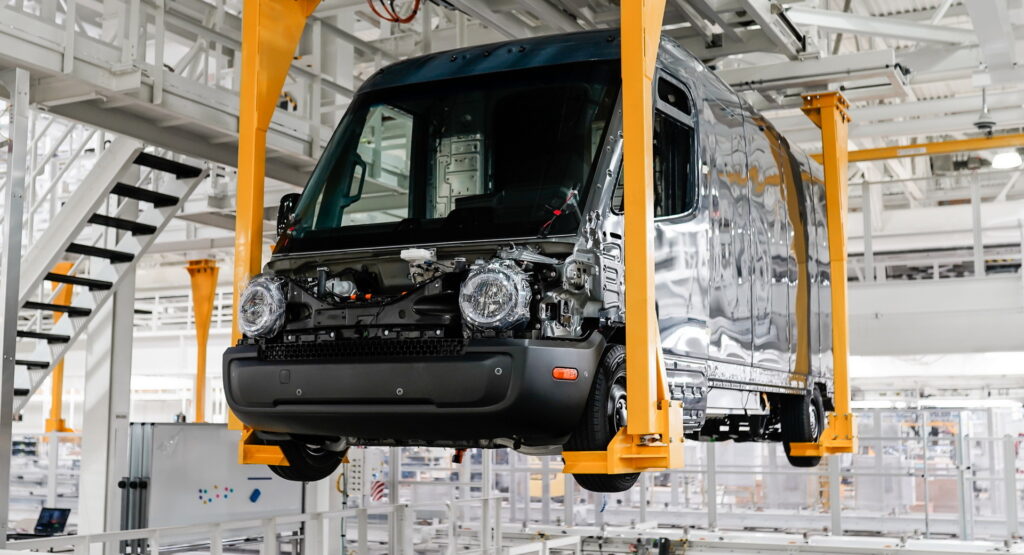 Despite the production setbacks that have bruised Rivian’s share prices, the company’s CEO, R.J. Scaringe, remains optimistic about the company’s future, saying that the startup has plans for a range of commercial vehicles in the future.
The CEO told Reuters that there will be numerous other applications for the chassis that underpins the EDV-700, for which Amazon has placed a large order. Dubbed the RCV platform, the company has big plans for it. “We’re thinking about many other aspects of the commercial space outside of last-mile delivery (including) cargo and work vans,” Scaringe said. “We’ve had a whole host of discussions with other customers,” he added, though he did not specify which. The company is also planning a series of smaller commercial vehicles, which could share components with the upcoming R2 electric crossover. The series will be smaller than the EDV-700 that’s going to Amazon, and could therefore serve different niches in different markets. In all, Scaringe said he expects Rivian to be making 1 million electric vehicles per year by 2030 and “a lot more than that” as the decade elapses. That will require more production capacity that the company currently has. “That’s going to require multiple vehicles, different platforms and sizes,” said Scaringe. “And ultimately, multiple plants above and beyond what we have in Normal and what’s been announced in Atlanta. There will be additional facilities that will allow us to go into these different markets and scale up.” Scaringe’s optimism comes as Rivian is struggling to ramp up production of its first vehicles. Although its customer vehicles are now rolling out of the factory, production is slow, and it’s unclear if it will be able to meet its goals this year. As its share prices suffer, its customers grow frustrated, and the demands on its production network grow, Rivian will have to produce vehicles as quickly as possible if it wants to achieve its lofty goals. |
| Just Two Car Groups Are Attending Korea’s 2022 Busan International Motor Show Posted: 21 Jul 2022 05:39 PM PDT 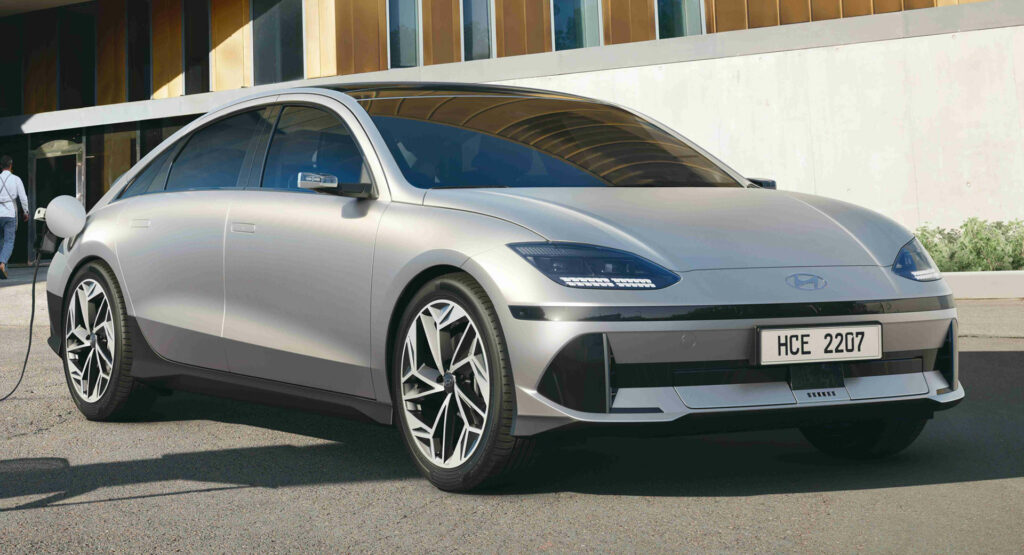 Did you know that the Busan International Motor Show is currently underway in Korea? Chances are, you probably didn't, and that's because this year's event has proven to be a shell of its former self. The event has long been shaping up to be quite different than in previous years. In May, both Mercedes-Benz and Renault announced that they would skip the event, despite having significant presences in Korea's automotive market. The show has fallen out of favor for so many car manufacturers that just six brands from two automotive groups, consisting of Hyundai, Kia, and Genesis, as well as BMW, MINI, and Rolls-Royce, are currently showcasing their cars. Korea Times notes that the Hyundai Motor Group has brought along the likes of the Ioniq 6 and Kia EV9 Concept to the event while BMW has showcased the 2-Series Active Tourer and Mini Electric. Read Also: Mercedes-Benz And Renault Skipping Korea's Busan Motor Show While the car manufacturers who decided not to participate haven't provided reasons why, an official from the car industry told Korea Times that organizers of the event need to make it more attractive. "The Busan Metropolitan City Government, the organizer of the motor show, should focus on making it more attractive so that car brands are willing to take part in it," the official said. "It takes billions of won when joining the event. Taking a look at globally famous motor shows in the world, they are trying to focus more on the electric car industry in order to keep attracting global car brands." The fall of the Busan International Motor Show has been fast. The 2018 edition attracted no less than 19 brands, including 11 foreign car manufacturers. The lack of car makers at this event has prompted some information and communications technology companies to fill the void. One of these include SK Telecom that is developing a flying car service. |
| 2022 Toyota Tundra Backup Cam May Show Front Feed When Drivers Are In Reverse Posted: 21 Jul 2022 05:07 PM PDT 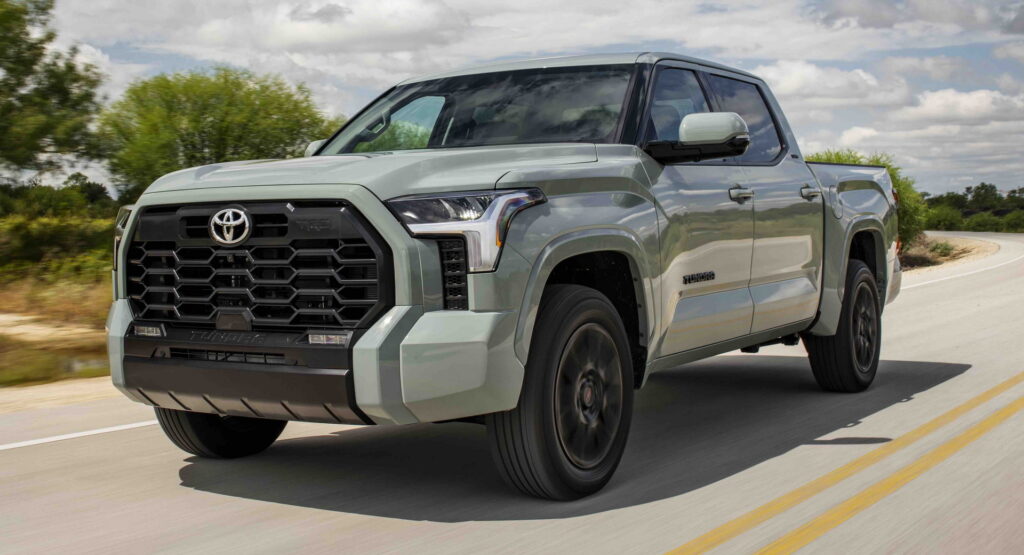 An example of just how complex car tech has gotten comes today in the form of a recall that has been initiated by Toyota. The company must recall 31,428 Tundra and Tundra Hybrid pickups from the 2022MY as a result of a glitch in their backup camera that could show drivers the forward feed instead of the backwards feed.
The recall affects vehicles equipped with a Panoramic View Monitor system, which plays camera feeds from all around the truck on the infotainment screen. Now a common feature in large vehicles, the cameras help drivers see obstacles near their vehicle, which is especially useful in off-road situations. In more urban areas, the system uses information from the parking assist ECU to activate the signals for each of these cameras, as needed. If, say, a driver is getting too close to a pole on their left, the feed from the nearest camera will play to help drivers avoid it. Read Also: Cold Weather May Cause Backup Camera In The 2022 Toyota Tundra To Cut Out When it’s running properly, it’s a pretty helpful feature. Due to incorrect programming of the parking assist ECU software, though, the infotainment screen may play the feed from the forward camera if an object has tripped the front sensors. In sporadic instances, the rear-facing camera may not turn on the next time the car goes into reverse, which is that camera’s main trigger for playing on the screen. If a Tundra is shifted into reverse and the rearward camera feed doesn’t play on the screen, as is possible, then it doesn’t abide by federal regulations requiring all vehicles to have backup cameras. This instance of Toyota getting tripped up by its own fancy footwork affects 2022 Tundras made between November 3, 2021, and July 12, 2022, and 2022 Tundra Hybrids made between March 15 and July 8, 2022. The automaker will reach out to owners by first class mail starting on July 27. They will be asked to return their vehicles to a Toyota dealership, where a technician will reprogram the Parking Assist ECU, at no cost to the customers. |
| ACT Becomes First Australian State To Ban Sales Of New Gasoline And Diesel Vehicles From 2035 Posted: 21 Jul 2022 04:35 PM PDT 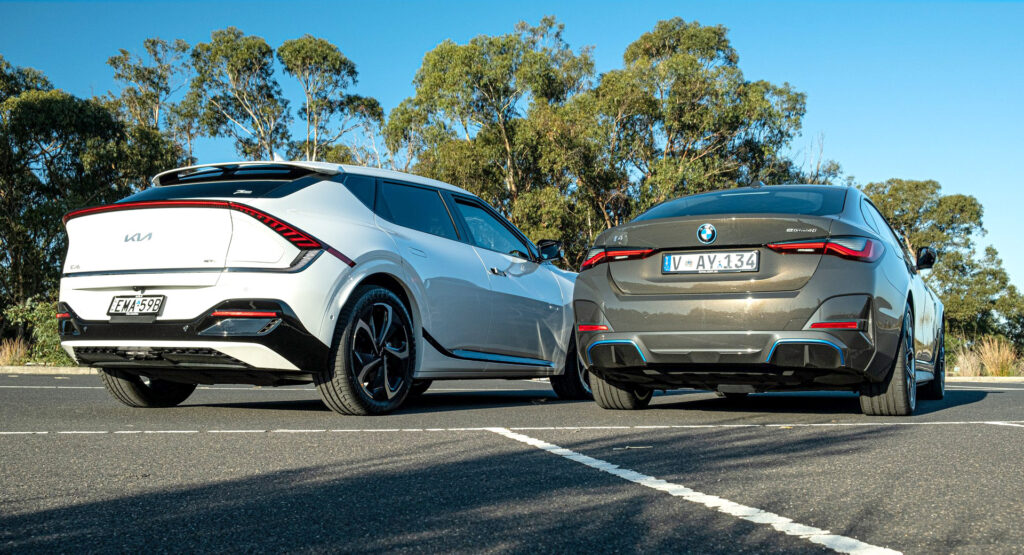 Canberra has made it official, dealers will no longer be allowed to sell internal combustion vehicles in the Australian capital from 2035. The news was announced by the Australian Capital Region’s (ACT)—which is a bit like Washington, D.C.—Chief Minister, Andrew Barr, who released the government’s 2022-2030 Zero Emissions Vehicles Strategy “We are heading down a path that the internal combustion engine vehicle will be as much of a novelty as a cassette tape or a black and white television in the context of technological change,” said Barr. The document includes both long and short term goals for ACT, including the overhaul of car registration and making fees emissions-based, as well as setting goals for charging infrastructure, reports the Australian Broadcasting Corporation. Speaking to News Australia, the country’s minister for Emissions Reduction, Shane Rattenbury, said that the ICE ban will apply to new cars, motorcycles and small trucks. "Our intent is that from 2035, you will not be able to put new (cars) on the road. But the government does not intend to take your car off the road if you're driving around in an all-petrol vehicle at the start of the year." Read Also: EU Countries Agree On Selling Only Zero Emission Vehicles By 2035 The move will also change how Canberrans register their new vehicles. Barr said that the current registration system penalized electric vehicles by being based on weight. Despite their batteries weighing quite a bit, EVs emit fewer local emissions than ICE vehicles. The government will also build on existing measures that were previously made to encourage the sale of new EVs to used models, too. The stamp duty (a tax on vehicles) exemption for new electric cars will be extended to used EVs, as of August 1. “We are seeking to grow the second-hand market because that will be an important part of this transition over the coming decade,” Barr said. ACT offers eligible households up to $15,000 in zero interest loans to buy an EV under the Sustainable Household Scheme. The ACT will also seek to ensure that there are at least 180 charging stations available across the territory by 2025. It added that it aims to install 70 of them during this financial year. All new multi-unit residential and commercial buildings will also be required to include EV charging stations and other new buildings will have to be EV ready, starting next year. The push will also lobby to add more chargers along interstate highways. “This strategy sets our territory up, so we can support the investment and the technology innovation when it becomes available, making it easier and more accessible for people to transition to ZEVs at a time that is right for them,” he said. Lead photo Brad Anderson / Carscoops |
| Back To 1985? This 569-Mile DeLorean Will Take You Back To ’81 Posted: 21 Jul 2022 04:03 PM PDT 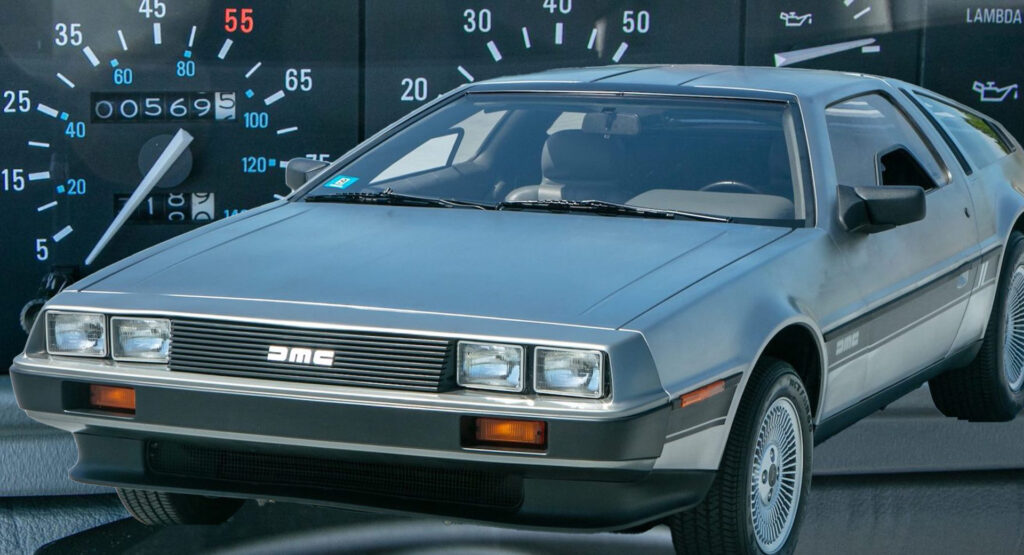 DeLorean's first new car for 40 years is an all-electric rival for the Porsche Taycan called the Alpha5. But if you'd prefer your new DeLorean to be more like the old one, then this frozen-in-time DMC-12 could be in your future.
Built in Northern Ireland in 1981 and sold new by Smyly DeLorean in Malden, MA, it remained with its first owner for just short of 40 years, during which time he added fewer than 550 miles (885 km) to the odometer. The total mileage is 569 miles (916 km) and 40 of those (64 km) have been added by the previous owner, who took custody in April 2021. Like almost every factory-spec DMC-12 this one has the stock brushed aluminum panels and turbine wheels, in this case matched to a rather anemic gray leather interior – John Z clearly hadn't grasped the concept (and profit opportunities) of automotive personalization despite having worked for years at GM. It has the federal-tune catalyst-equipped 130 hp (132 PS) version of the 2.85-liter PRV V6 engine rather than the 154 hp (156 PS) variety fitted to the handful of cars that stayed in Europe, but it does have the desirable five-speed manual transmission. It also has the 85 mph (137 km/h) speedometer mandated in the U.S. at the time, so you can't really be sure exactly when you've hit 88, but period tests confirmed it was good for that and more. Car & Driver put the top speed at 120 mph (193 km/h), though the 9.5-second zero to 60 mph (96 km/h) time isn't going to leave two streaks of fire at any stoplights without some Hollywood CGI help. Read Also: DeLorean Alpha5 Is A Low-Slung Electric GT With Gullwing Doors The Bring-a-Trailer ad says the car was serviced in April of this year when it received a new fuel distributor assembly, warmup regulator, spark plugs, injectors, battery, fuel pump assembly and brake master cylinder, none of which evidently enjoyed sitting idle for four decades. With those fixes now done the DMC-12 should be good to go, though it's unlikely anyone is going to pile too many miles on such a low mileage car. With six days to go at the time of writing bidding was already up to $51,000, so it's safe to assume this car is going to sell for strong money. Do you think it will reach the $175,000 the current DeLorean company is rumored to have in mind for the four-seat Alpha5, and which would you want in your garage? |
| Elon Musk Hopeful That Tesla Cybertruck Deliveries Will Begin In Mid-2023 Posted: 21 Jul 2022 03:02 PM PDT 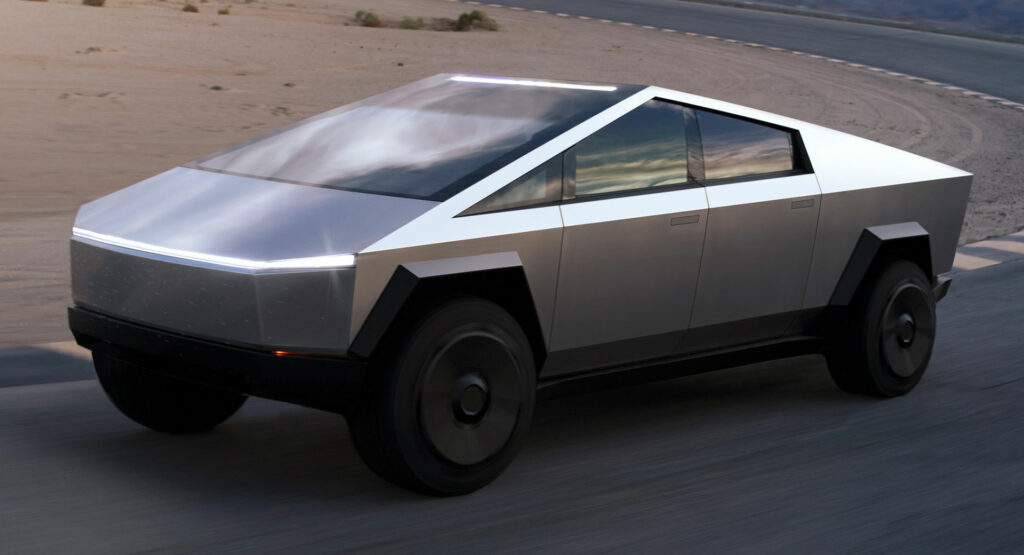 November 21st will mark the third anniversary of the Cybertruck's unveiling and, when that date arrives, it will remind investors and reservation holders that Tesla's electric vehicle dominance is fleeting. While the model would have been revolutionary had it arrived in 2021 as promised, Tesla has become a spectator in the race they started. The GMC Hummer EV, Rivian R1T, and Ford F-150 Lightning have already gone into production, while countless others are set to follow and potentially beat the Cybertruck to market. However, it's impossible to say as even Tesla doesn't know when the Cybertruck will be launched. CEO Elon Musk acknowledged as much during Tesla's question and answer session for shareholders. In response to a question that had been upvoted 7,500 times, Musk said "We're hoping to start delivering them in the middle of next year." Of course, hope only gets you so far as once hopeful Semi, Roadster, and Cybertruck reservation holders will tell you. Also Read: Check Out The Interior Of The Latest Tesla Cybertruck Prototype Even if Tesla is able to hit their target of mid-2023, the Cybertruck could arrive after the Chevrolet Silverado EV. A fleet-focused WT variant is slated to arrive in the spring of 2023 with an estimated range of over 400 miles (644 km). It will then be followed by the range-topping RST First Edition in the fall of that same year. That being said, Tesla may finally be able to hit their latest deadline as Giga Texas is now open and cranking out Model Ys. The company has also been testing an assortment of Cybertruck prototypes and they appear to be inching closer to production. While there's little doubt the truck will eventually roll off the assembly line, the bigger question will probably become are they too late? H/T to The Verge |
| Florida Commissioner Speeding In Ferrari Gets Ticket After Claiming “I Run The County” Posted: 21 Jul 2022 02:29 PM PDT  The Florida Highway Patrol has released footage of a traffic stop between one of its troopers and Flagler County Commission Chairman Joe Mullins.
The video was recorded on June 19 on Interstate 95 and documents obtained by People show that the chairman was driving at 92 mph (148 km/h) in a 70 mph (113 km/h) zone. Despite driving more than 20 mph (32 km/h) over the speed limit in his 2014 Ferrari 458 Spider, the trooper insinuated that he could have been in a generous mood, but that Mullins’ reputation preceded him. Read Also: Florida Man Arrested For Going 100MPH Tells Cops "The Car Is A Ferrari And It Goes Fast" “Usually I give warnings, I give breaks. But it looks like you’ve been written a warning already,” he said and informed the chairman that he would be receiving a citation. Mullins interrupted him, though, and said “I run the county, I know how that works.” That may not be the only reason he knows, though. Earlier in the month, FlaglerLive reports that the chairman was also pulled over in an apparent third traffic stop, this time for doing 90 mph (145 km/h) in a 60 mph (96 km/h) zone. After being stopped, Mullins literally tried to pull the commissioner card and showed the trooper who pulled him over a business card, despite being in Seminole County, not his own, in an apparent attempt to get out of the speeding ticket. The trooper later described the chairman as “extremely condescending, belligerent, illogical, and disrespectful.” According to dispatch notes obtained by the Daytona Beach News-Journal, the trooper returned to his vehicle and told his colleague that Mullins “said he was a county commissioner.” The colleague replied “Yeah, well, he’s getting a ticket,” paused, and then asked “What county?” After informing the chairman that he could drive away, the trooper reports that Mullins continued to argue and “stated it would be a career-ending move if I arrested him for failing to obey a lawful order.” Following that ticket, Mullins paid a $256 fine and was given the opportunity to complete a four-hour driver improvement course to avoid receiving points on his license. |
| Baidu Debuts Apollo RT6 Level 4 Autonomous Minivan With Removable Steering Wheel Posted: 21 Jul 2022 02:00 PM PDT 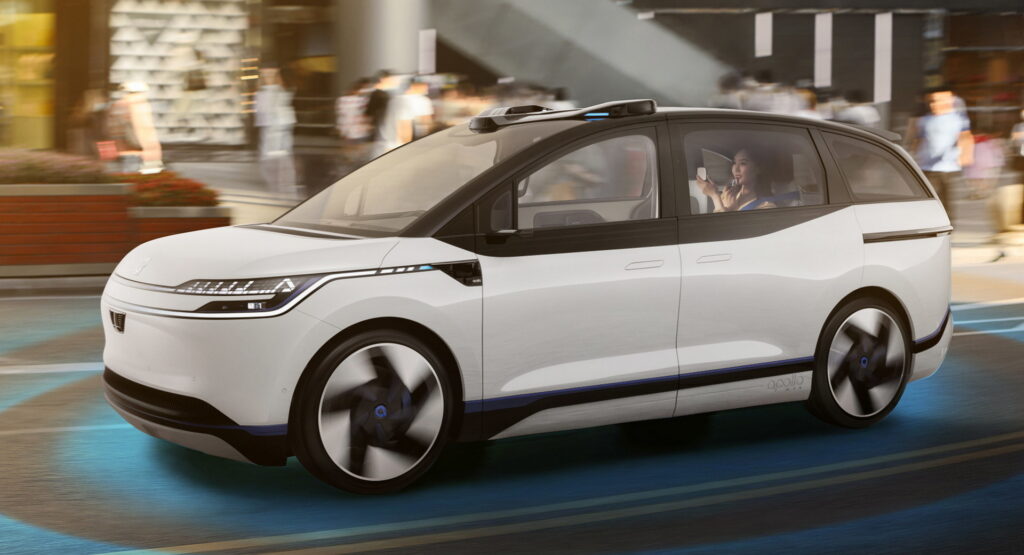 Chinese engine giant Baidu has unveiled its latest-generation autonomous vehicle with the Apollo RT6. Designed from the ground up, the RT6 will enter service as a robotaxi with Apollo Go, the company’s ride-hailing service, next year.
Designed to look a little more like a traditional vehicle than, say, Zoox’s autonomous robotaxi, the Apollo RT6 does have a flat floor and a removable steering wheel to allow space for more passengers, a desk, or a small vending machine. At 187-inches (4,760 mm) long, it’s about four inches (100 mm) longer than an Audi Q5. Although it may look like a minivan, its design has been considered carefully. With an X-shaped band running along the hood, the vehicle’s 8 LiDAR sensors and its 12 cameras have been integrated into the appearance of the vehicle. In total, Baidu says the Apollo RT6 has 38 sensors that help is obtain accurate, long-range detection on all sides. Read Also: Baidu's DeepWay Xingtu Electric Truck Has A 450 kWh Battery And Level 4 Autonomy With nearly 20 million miles (32 million km) of testing under its belt, Baidu‘s corporate vice president, Zhenyu Li, says that the vehicle drives as well as a human with 20 years of experience behind the wheel. Based on the new E/E vehicle architecture, the Apollo RT6 was developed specifically to be autonomous. The company’s previous generation vehicles, on the other hand, featured AV technology that had been retrofitted onto traditional vehicles. The real innovation in all of this, the company believes, is the price. Despite featuring cutting edge technology, Baidu says that the Apollo RT6 has a per-unit cost of RMB 250,000 ($36,927 USD at current exchange rates). That, it says, brings autonomous vehicles within reach of more people. “This massive cost reduction will enable us to deploy tens of thousands of AVs across China. We are moving towards a future where taking a robotaxi will be half the cost of taking a taxi today,” said Robin Li, co-founder and CEO of Baidu. Rides will be run through Apollo Go, Baidu’s robotaxi service, which has been operating since 2020. The service has served more than one million orders in 10 cities across China and the company says it has received a license to operate robotaxis without humans in the driver’s seat in Beijing, per Reuters. |
| Rivian’s Amazon Delivery Van Begins U.S. Rollout, Set To Arrive In 100+ Cities By End Of Year Posted: 21 Jul 2022 01:30 PM PDT 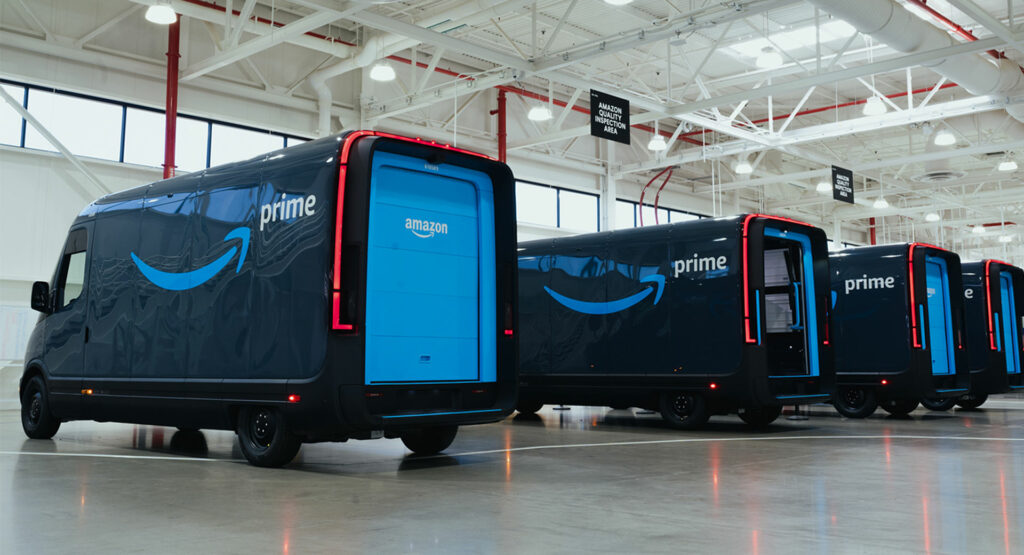 While the R1T is still a rare sight, Rivian's Amazon delivery vehicle will soon be spotted in countless cities across the country. The retailer revealed the vehicles are being rolled out in cities including Baltimore, Chicago, Dallas, Kansas City, Nashville, Phoenix, San Diego, Seattle, and St. Louis. However, this is just the beginning as Amazon expects to be using the electric van in more than 100 cities by the end of the year. The nationwide rollout has been a long time coming as the partnership was originally announced in 2019. The companies have been testing the van since 2021 and they have already delivered over 430,000 packages as well as traveled more than 90,000 miles (144,841 km). Also Watch: Amazon Starts Making Deliveries With Rivian's Electric Van Amazon says this testing was important as it allowed "Rivian to continuously improve the vehicle's performance, safety and durability in various climates and geographies as well as its state-of-the-art features to ensure driver satisfaction, and overall functionality." While the companies haven't revealed many specifications about the van, which is known as the EDV-700, Amazon said it was "designed from the ground-up with safety, sustainability, and comfort in mind." In particular, the model features a large windshield for improved visibility as well as safety features such as automatic emergency braking and a collision warning system. The model also has adaptive cruise control, an ergonomically designed cockpit, and a strengthened door on the driver's side for additional protection. To make deliveries easier, the van is equipped with a powered bulkhead door as well as a passive entry system. The model also sports "first-of-its-kind embedded technology that fully integrates the delivery workflow with the vehicle, enabling seamless access to routing, navigation, driver support and more." Amazon has plans to deploy 100,000 electric delivery vehicles by 2030 and the company says this will prevent millions of metric tons of carbon dioxide from being released into the atmosphere every year. |
| Ford Mustang Mach-E And F-150 Lightning To Get New Lithium-Iron Phosphate Battery Packs Posted: 21 Jul 2022 01:02 PM PDT 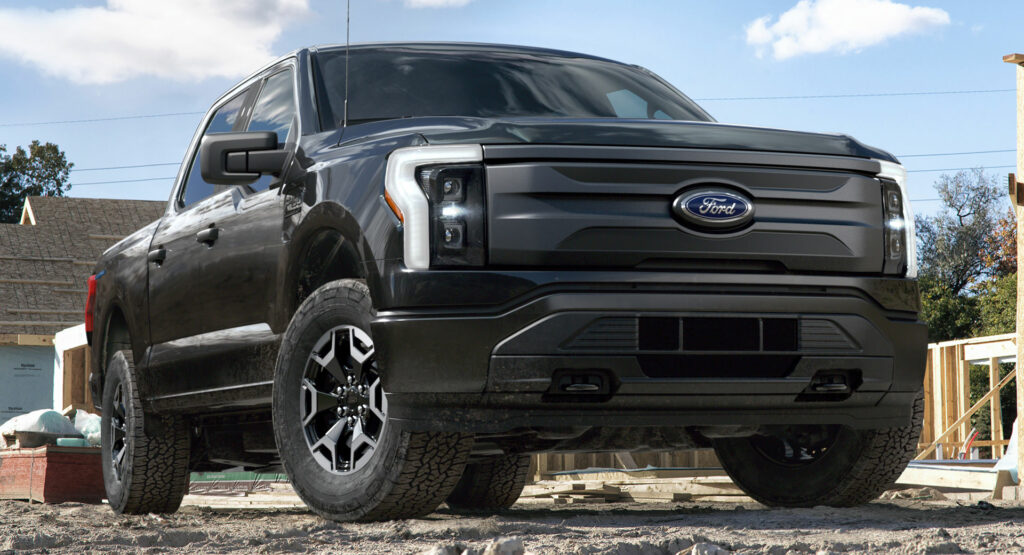 Ford is betting big on electric vehicles and this will require a vast amount of raw materials as well as hundreds of thousands of battery packs. To meet the anticipated demand, the automaker has added a new battery chemistry and secured contracts "delivering 60 gigawatt hours (GWh) of annual battery capacity to deliver [a] global 600,000 EV run rate by late 2023." Speaking of the latter, Ford expects that 600,000 figure to consist of 270,000 Mustang Mach-Es, 150,000 F-150 Lightnings, 150,000 Transit EVs, and 30,000 units of a new mid-size crossover for Europe. Also Read: Ford Investing $11.4 Billion Into Two Massive EV And Battery Plants Ford also announced plans to begin using a lithium iron phosphate (LFP) cell chemistry, alongside their existing nickel cobalt manganese (NCM) chemistry. The automaker said this will allow for increased production capacity for high-demand products as well as give customers "many years of operation with minimal range loss." More importantly for the automaker, LFP batteries reduce their reliance on scarce minerals such as nickel and, "at current costs, brings a 10 to 15% bill of material savings for Ford versus NCM batteries." On the topic of LFP batteries, CATL will be supplying packs for the Mustang Mach-E starting in 2023. The F-150 Lightning will then get LFP batteries in early 2024. In other news, LG Energy Solution and SK On are stepping up to increase production of NCM batteries. Thanks to these and other efforts, Ford has already secured 70% of the battery capacity needed to support a 2 million+ global EV run rate by 2026. While those are just some of the highlights about Ford's battery news today, the company emphasized the importance of securing raw materials and battery packs as they noted a "majority of consumers who intend to buy a car in the next two years say they will choose an EV or hybrid vehicle. That’s an 11% increase from last year and a 22% increase from 2020. |
| You are subscribed to email updates from news – Carscoops. To stop receiving these emails, you may unsubscribe now. | Email delivery powered by Google |
| Inbox too full? | |
| Google, 1600 Amphitheatre Parkway, Mountain View, CA 94043, United States | |











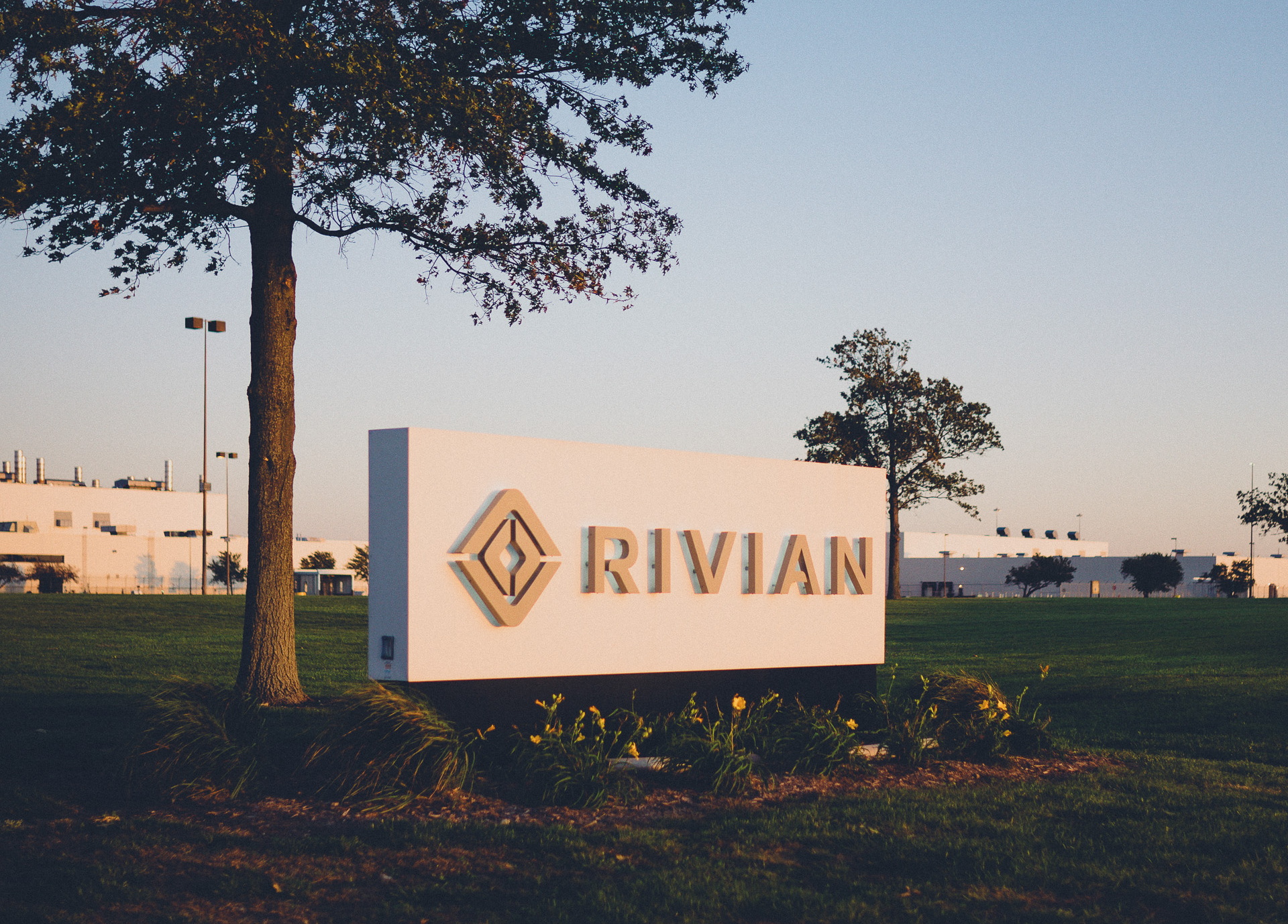
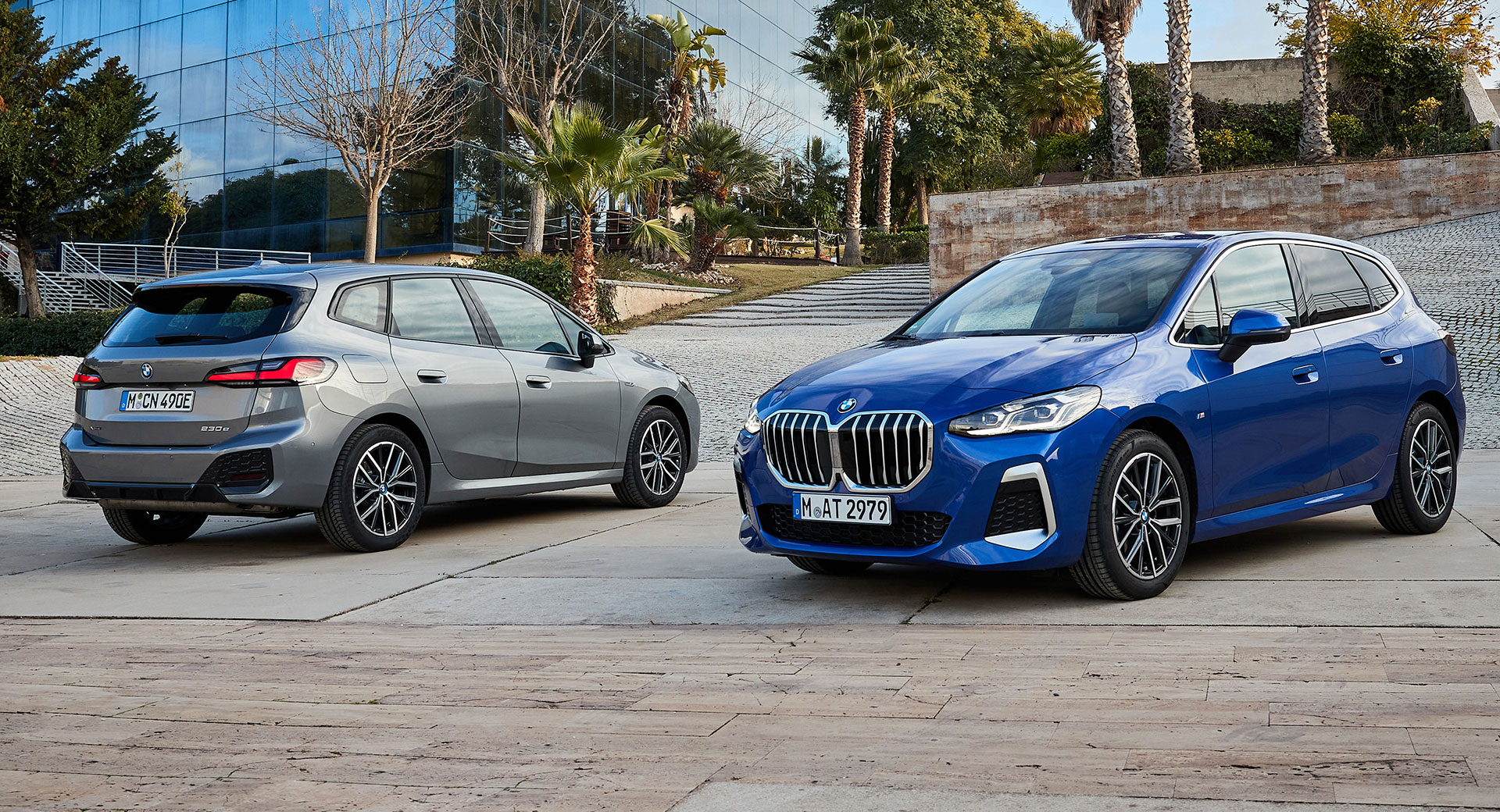

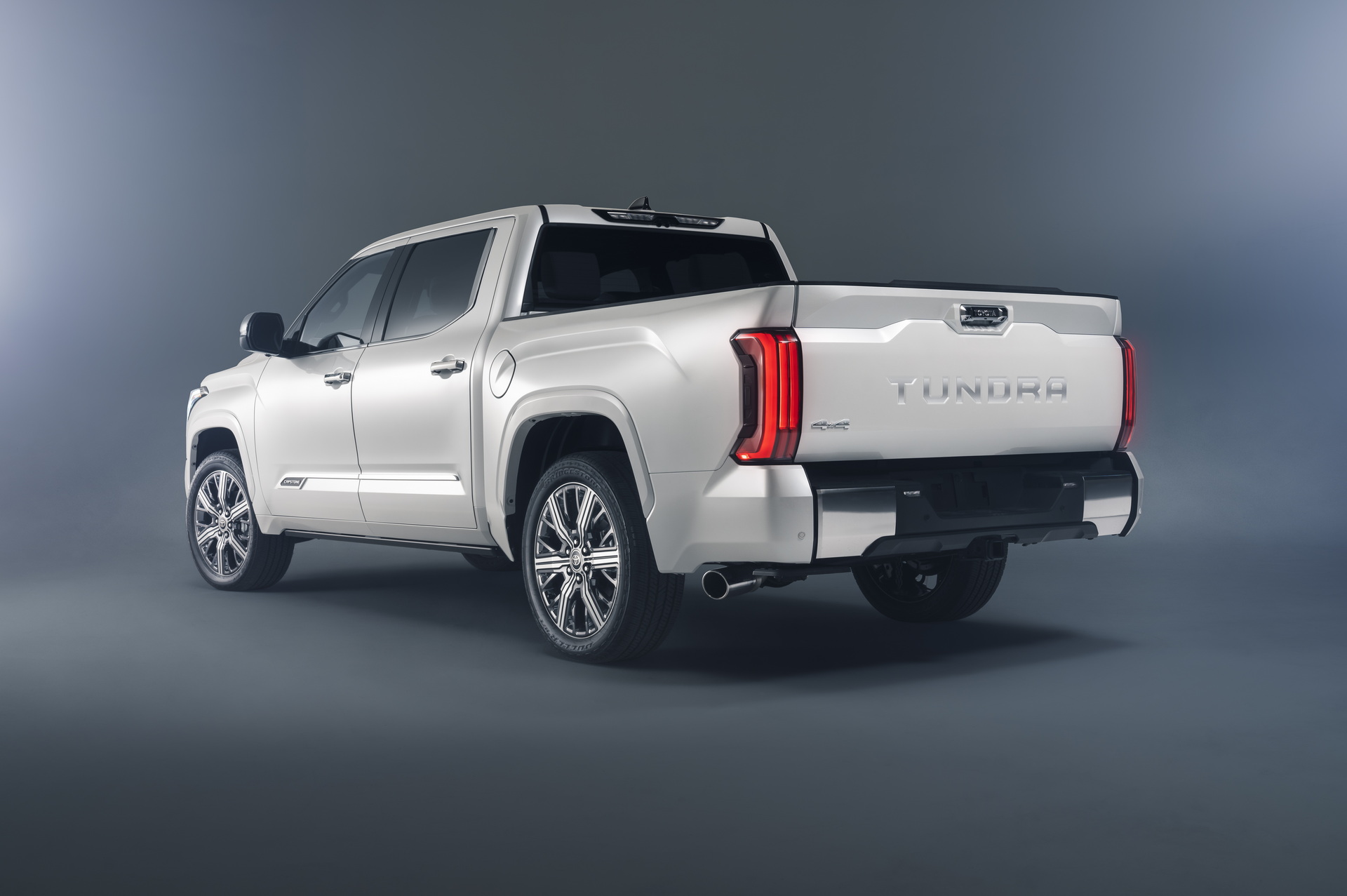
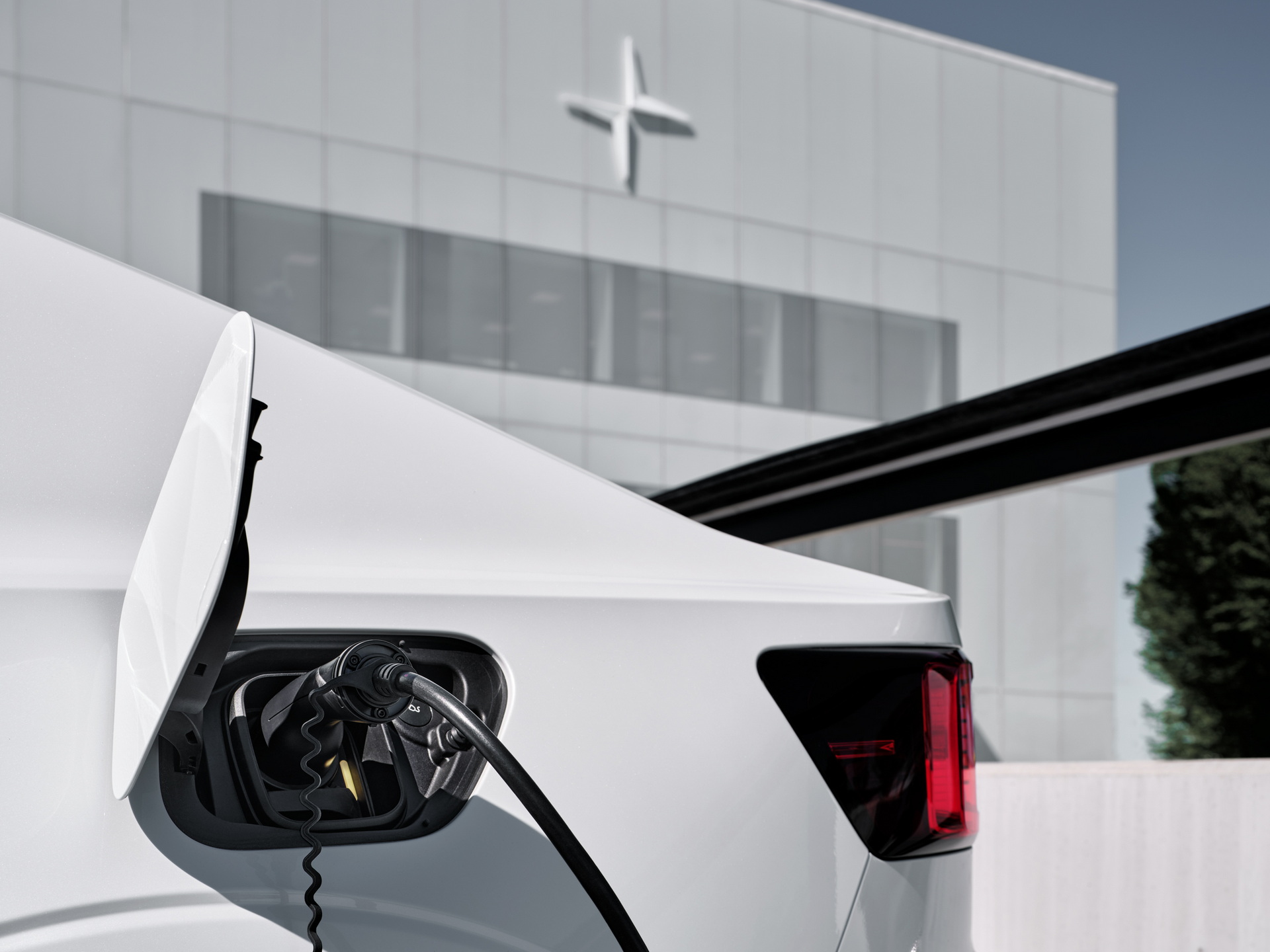
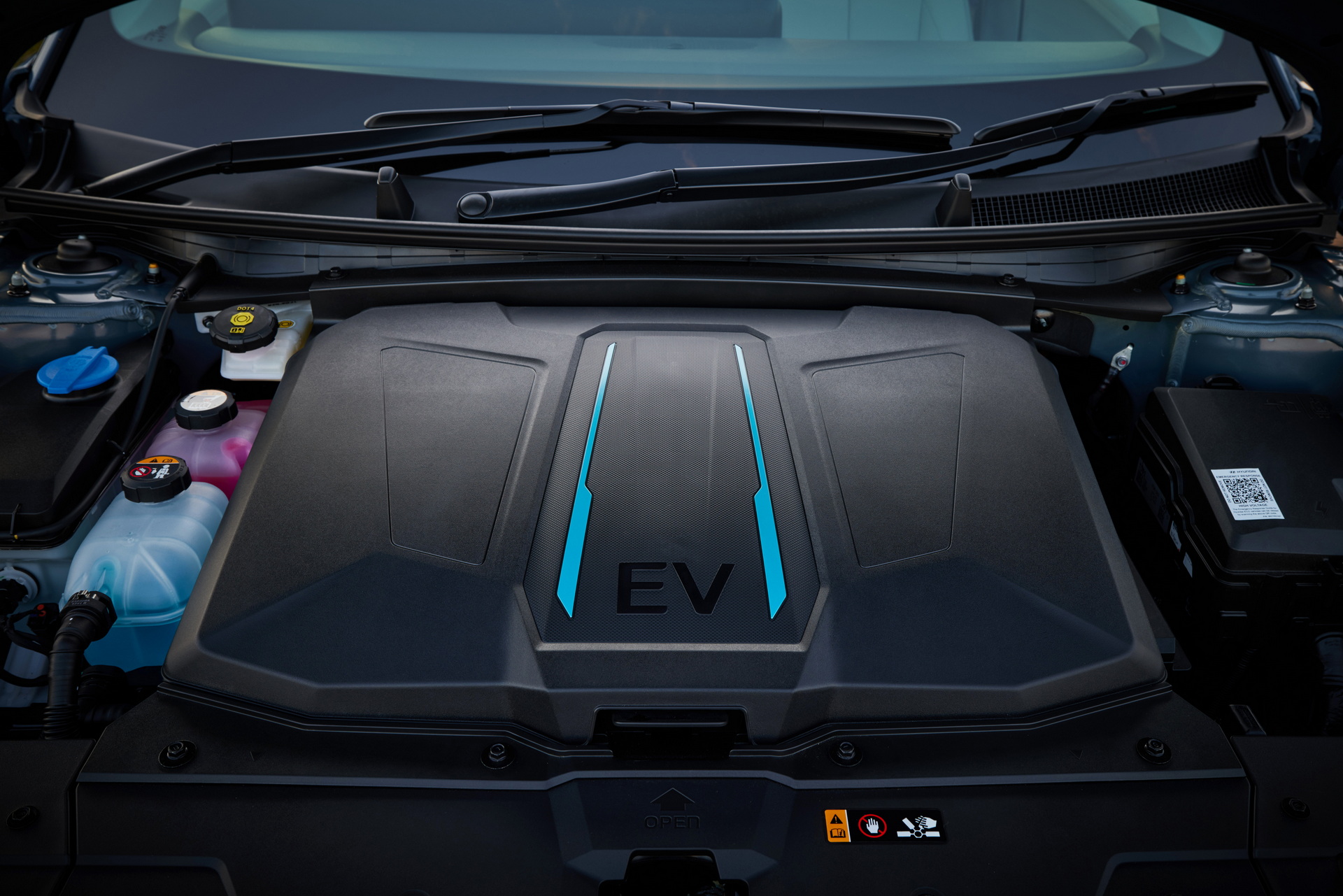
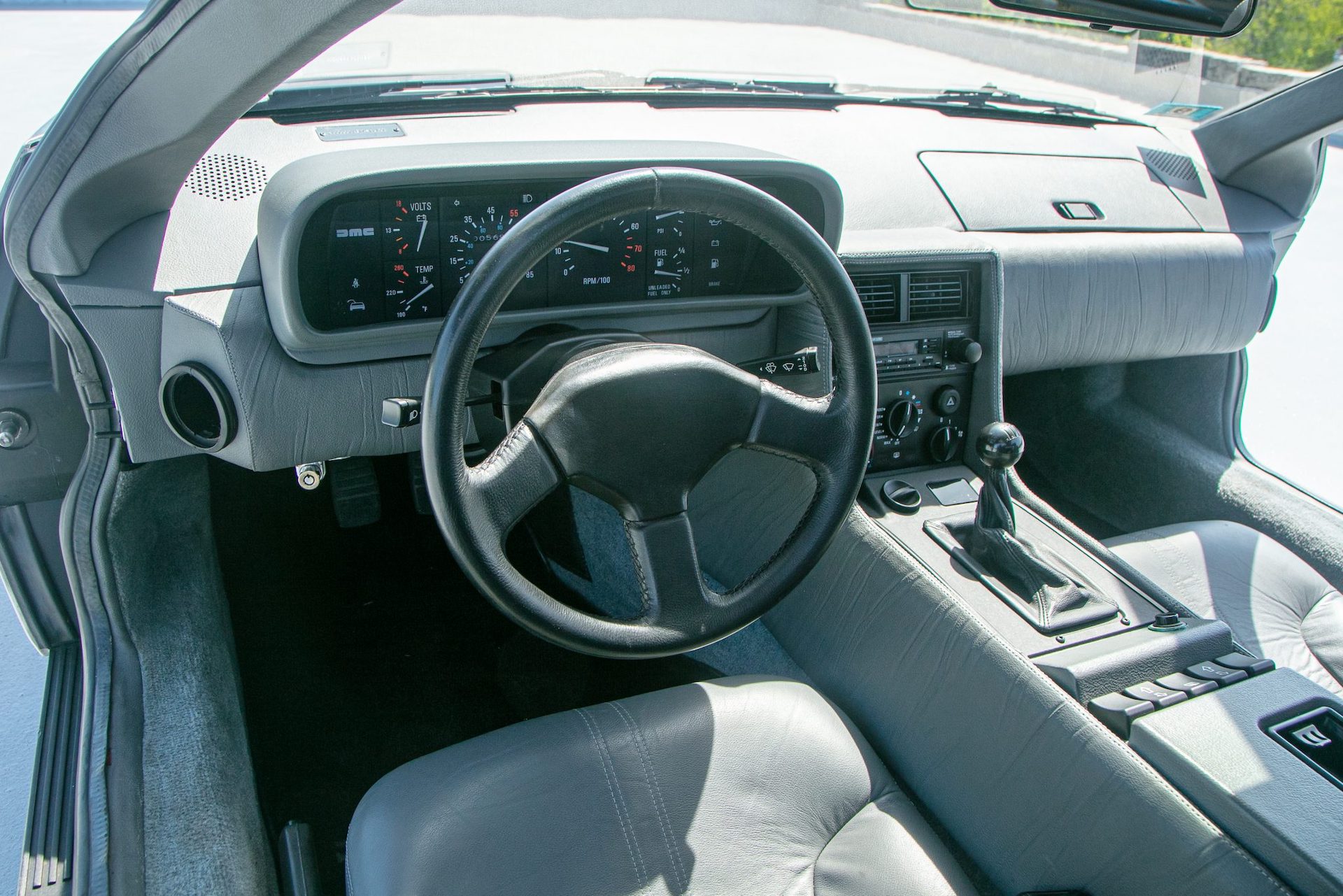





























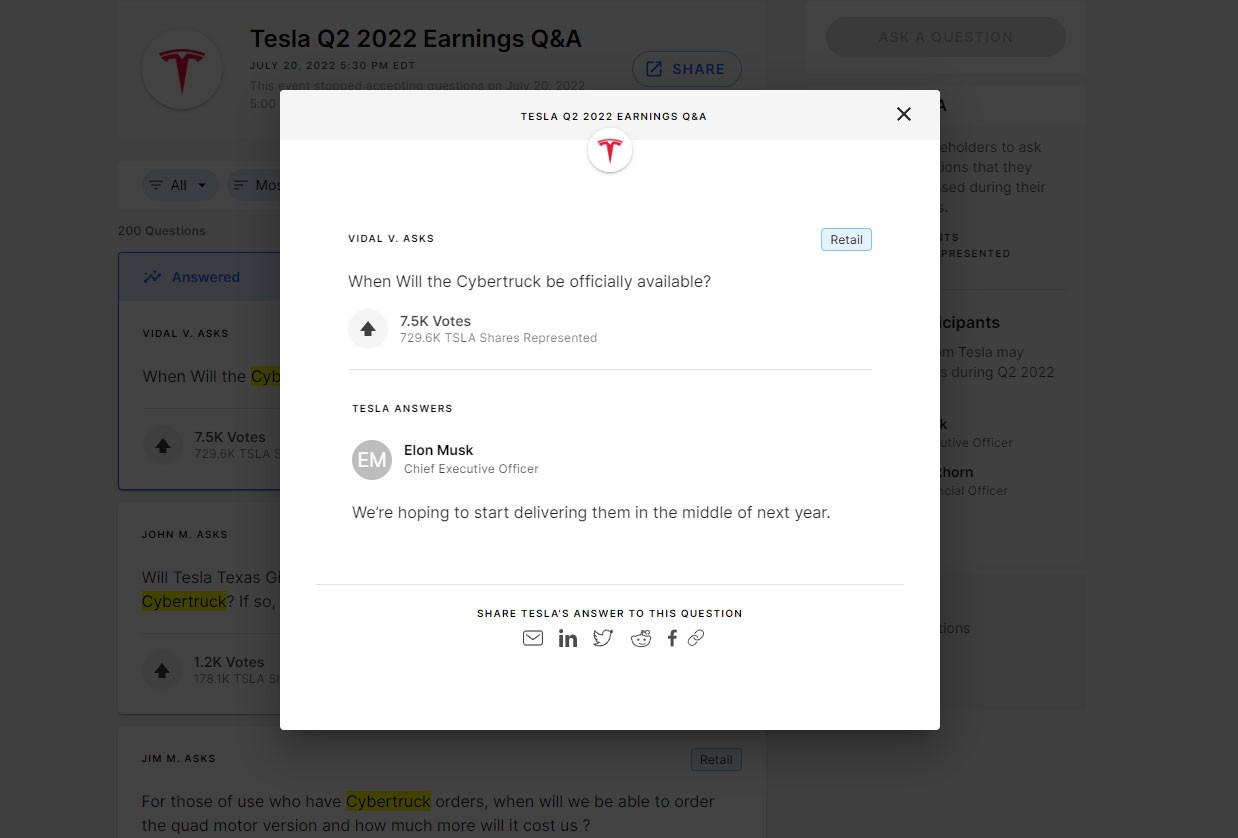
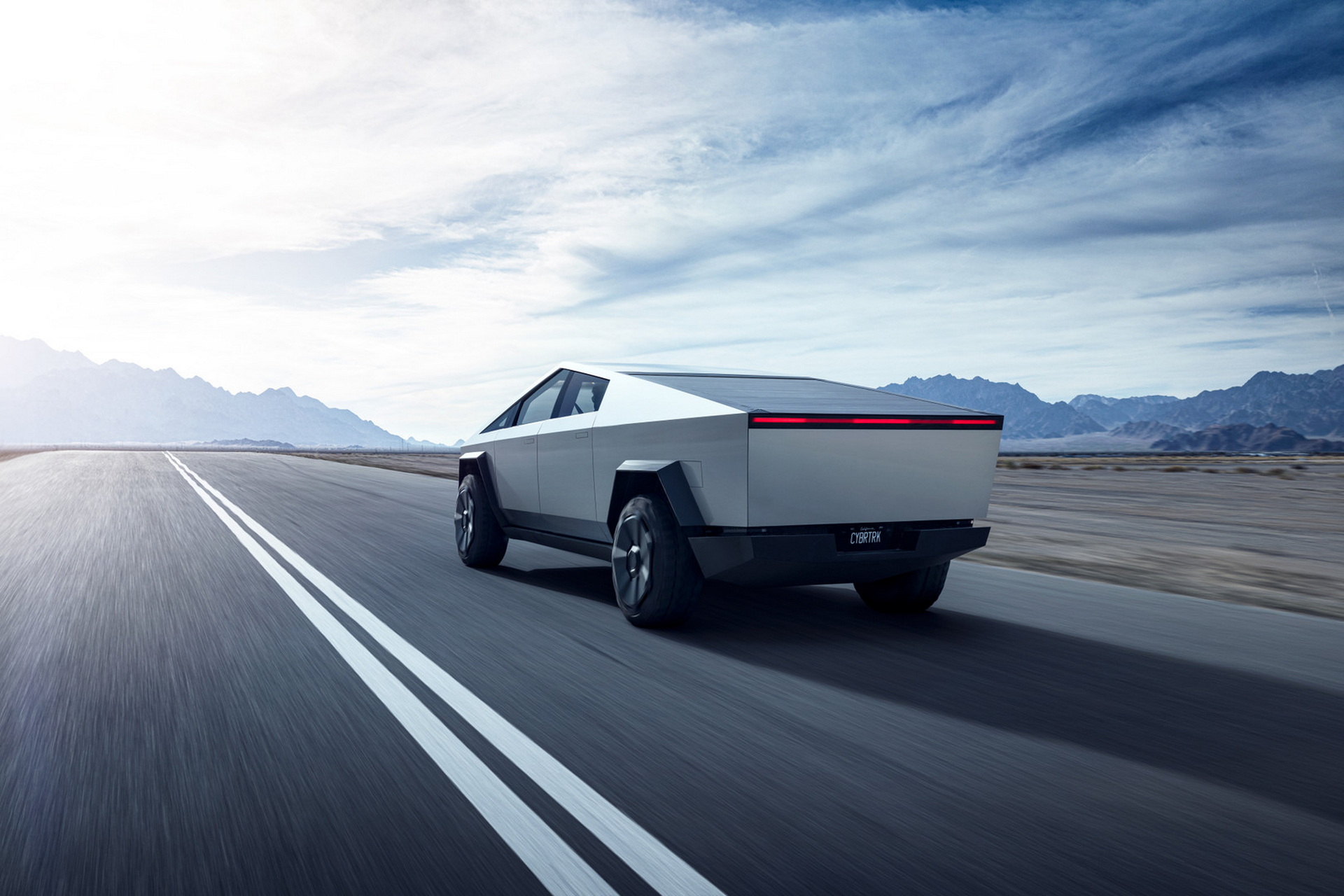
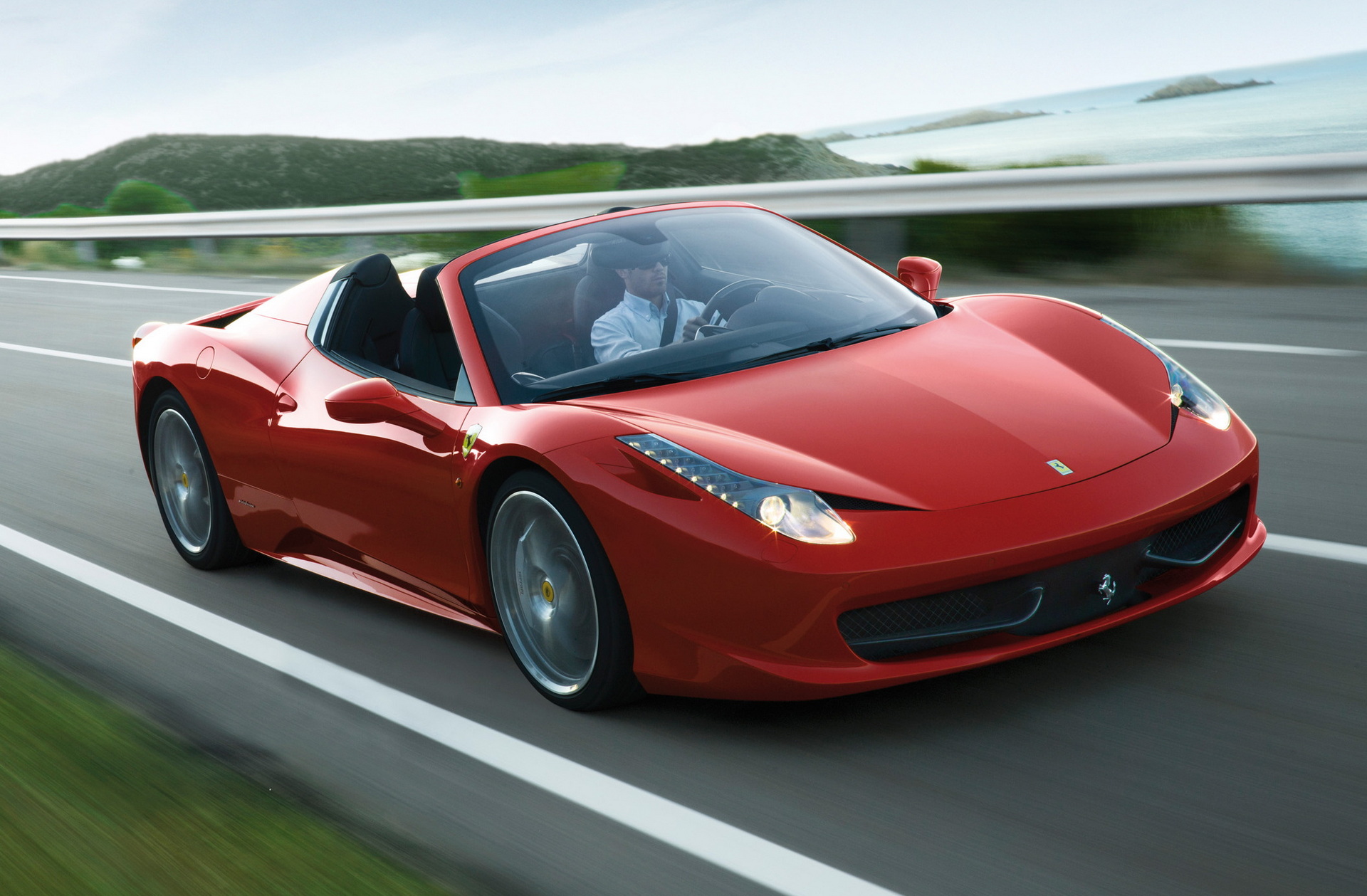













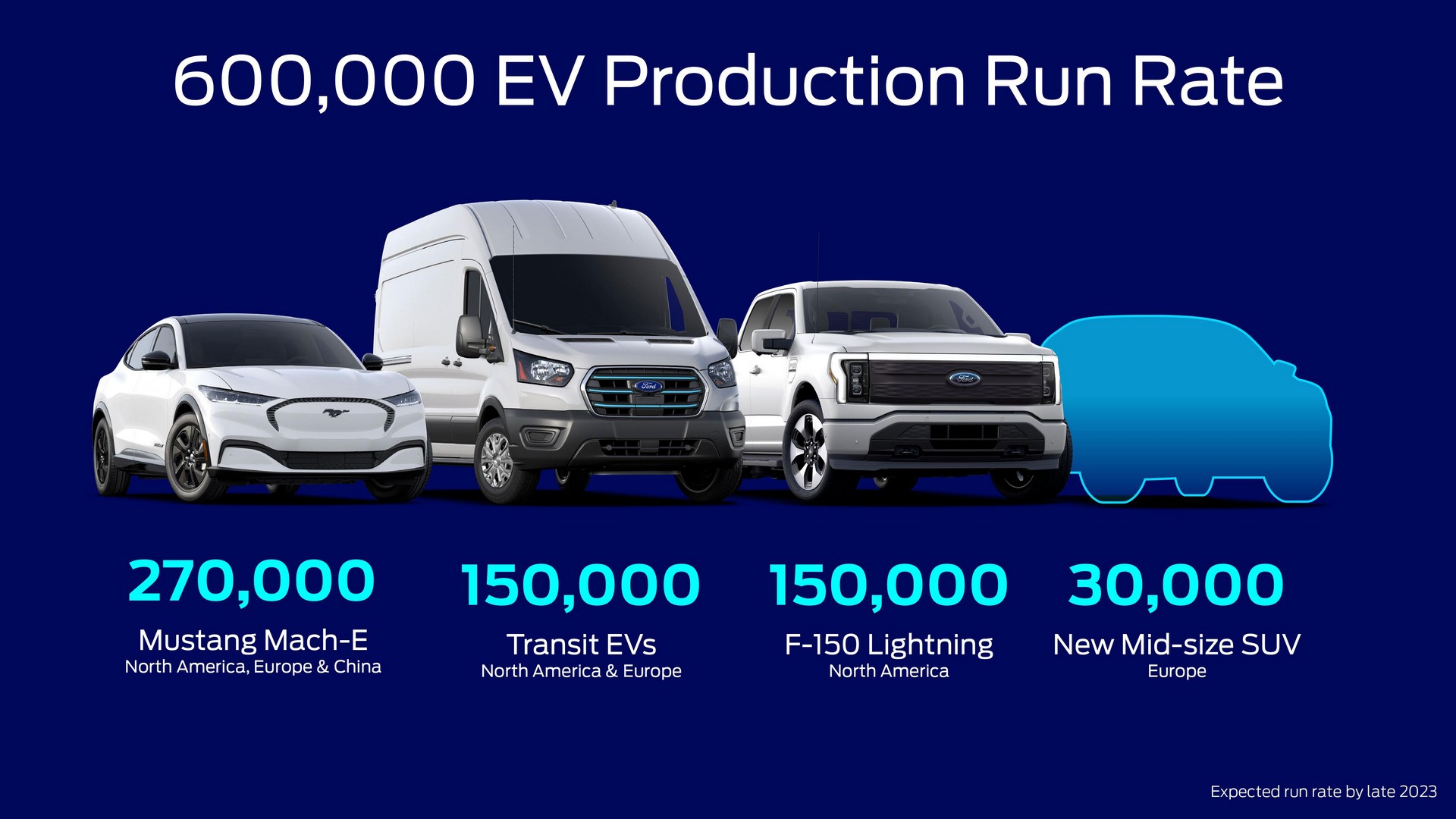
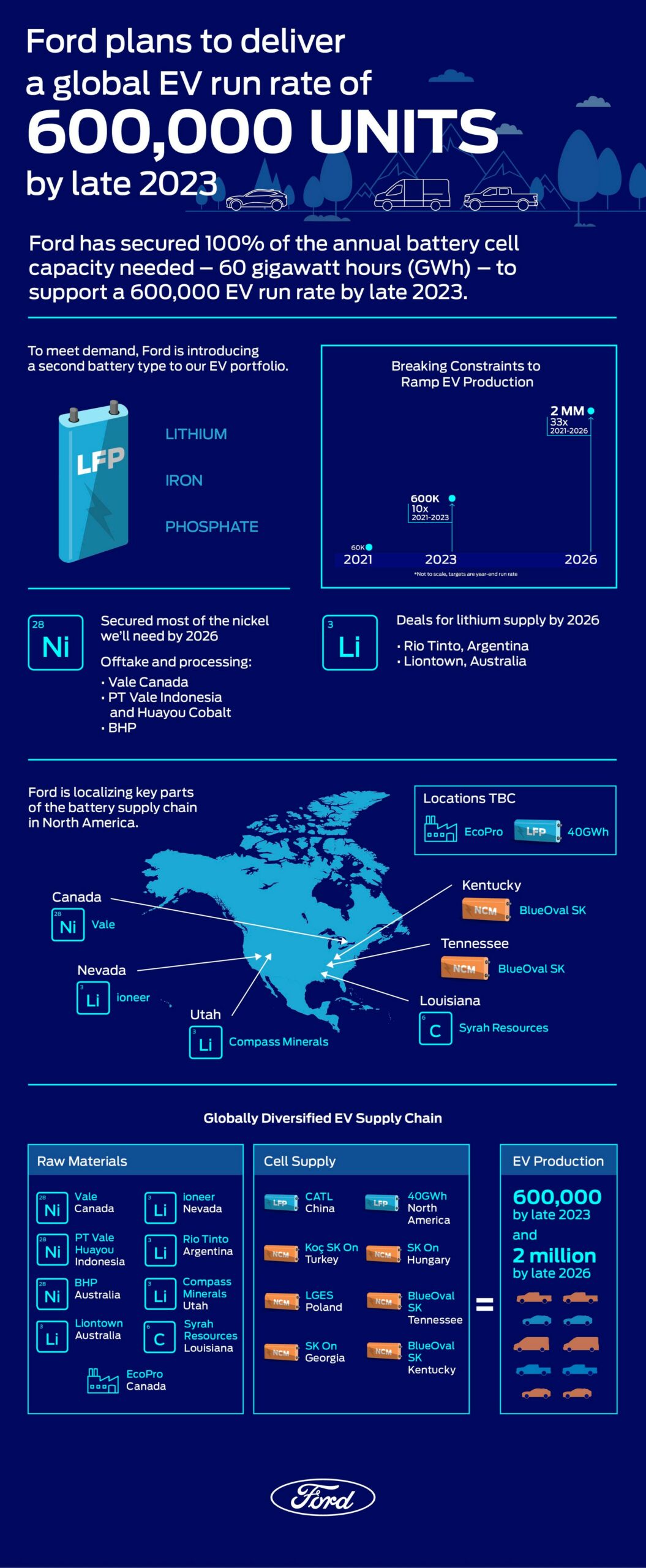

0 comments:
Post a Comment